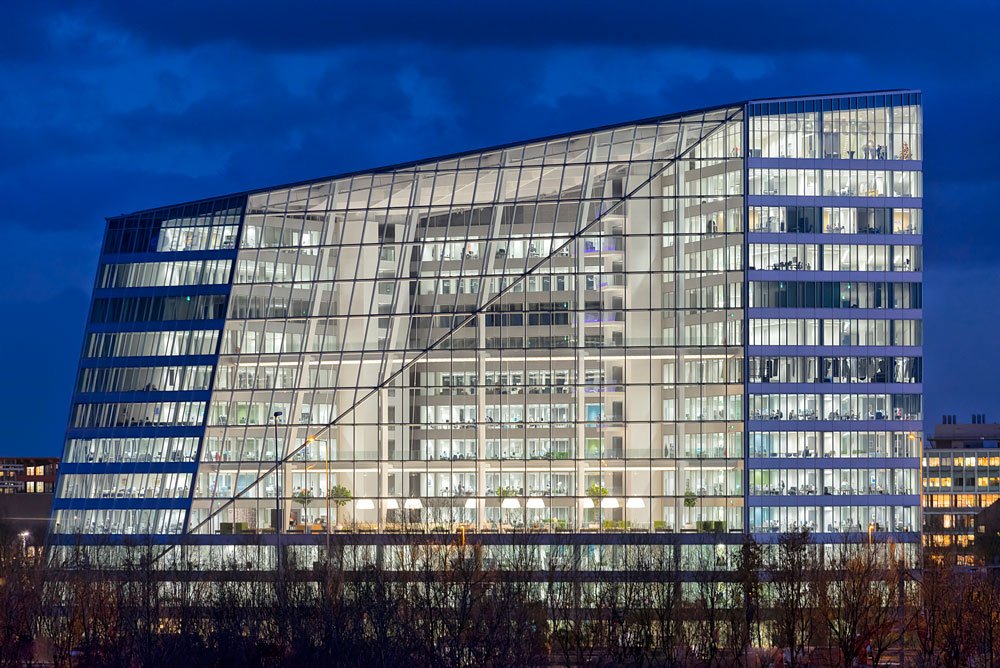
The Edge in Amsterdam is a leading example of a smart office building in Europe, demonstrating all the characteristics of being part of a smart system. The building uses 70% less electricity than comparable office buildings. The roof and the south-facing facade incorporate the largest array of photovoltaic panels compared with other European office buildings, and an aquifer thermal energy storage system provides all the energy required for heating and cooling. A heat pump is connected to this storage system, significantly increasing efficiency. The building and its users are connected by a smartphone app that can direct users to a parking spot, find them a desk, and tweak the environment according to their individual preferences for lighting and temperature, wherever the user goes.
The smart design, lighting solutions and the level of connectivity make this office building a leader in the smart building field.
Building 1 in the Swiss city of Basel is another inspiring non-residential building. The intelligent building with a room-automation system makes a considerable contribution to the building’s high energy efficient standards (primary energy requirement of 80.2 kWh/m2 per annum). Demand-controlled and energy-efficient room automation is ensured in conjunction with presence and light sensors. The system automatically switches off the light, ventilation and heating and cooling when a workstation is not in use. Heat is recovered in a highly-efficient process and a heat pump generates hot water. To ensure that Building 1 maintains, and even continues to improve its high level of energy efficiency, the energy flow is measured and monitored using an energy management system. The building is not just smart and energy efficient, it also ensures the best air quality for its occupant.
Triple Win:
Consumers should be empowered to take control of their energy consumption and production.
A smart-ready built environment takes advantage of the full potential of ICT and innovative systems to adapt its operation to the needs of the occupant, to improve its energy performance and to interact with the grid. Smart buildings can play a leading role in transforming the EU energy market, by transforming it into a more decentralised, renewable-based, interconnected and variable system that maximises efficiency. They also ensure that all resources are used in an optimal way, while enabling a better living and working environment for the occupants. Consumers are at the centre of the EU’s legislation for a low-carbon, healthierm and more comfortable building stock. Therefore consumers should be empowered to take control of their energy consumption and production. Smart and efficient buildings can deliver direct benefits for citizens in terms of lower energy bills and more comfortable homes, and wider benefits for the European economy triggering innovation and creating new job opportunities.
For more smart case studies and detailed information on the principles of a smart building see BPIE reports:
